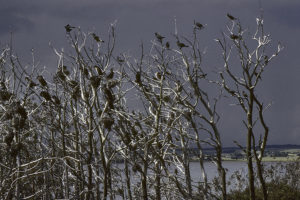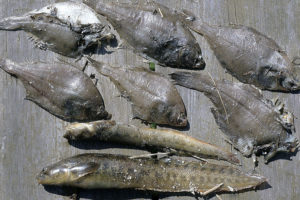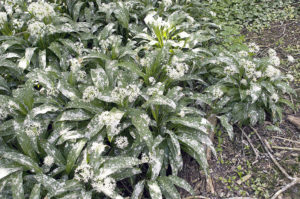Kaj Halberg - writer & photographer
Travels ‐ Landscapes ‐ Wildlife ‐ People
Pungent smell

Following periods of scanty rain, the naked trees in the western sub-colony are white, tinted by the guano, and almost blinding in the sunshine. The contrast is tremendous, when a black thundercloud builds up behind the trees.
In the old western forest, Vesterskov, a different, garlic-like smell permeates the forest, emitted by ramsons (Allium ursinum), which covers large areas of the forest floor here. This species is often spreading at the expense of other plants. This fact was already noticed by famous Swedish naturalist Carolus Linnaeus (1707-1778), also called Carl von Linné, on his journey to Gotland in 1741: ”The farmers told me about this plant that where it grows, it will expel other plants, of which we had clear evidence, because beneath bushes, where ramsons was growing, no other plants were found.”
A popular name of ramsons is bear’s garlic. According to the booklet Chrut und Uchrut (in English called Herbs and Weeds – a useful booklet on medicinal herbs), written in 1911 by Swiss priest and herbalist Johann Künzle (1857-1945), this name was applied hundreds of years ago by people, who noticed that bears, still weak and emaciated after a long winter hibernation, would gorge themselves on leaves of ramsons and thus regain their strength. This fact is reflected in the specific name ursinum, from the Latin ursus (‘bear’), applied in 1758 by Linnaeus.
The white umbels of ramsons is a sight to behold. However, they soon fade, the leaves wither, and the stems lie flat on the ground. The seeds are surrounded by an oil-rich shell that is much appreciated by ants, which carry them away, thus contributing to the dispersal of the species.
Some of the ramsons in Vesterskov not only has white umbels – their leaves are also white, spattered by cormorant guano. Ramsons may be able to expel other plants, but on the other hand, it is not able to withstand the caustic guano, and many of the spattered plants die.
Sic transit gloria mundi.




